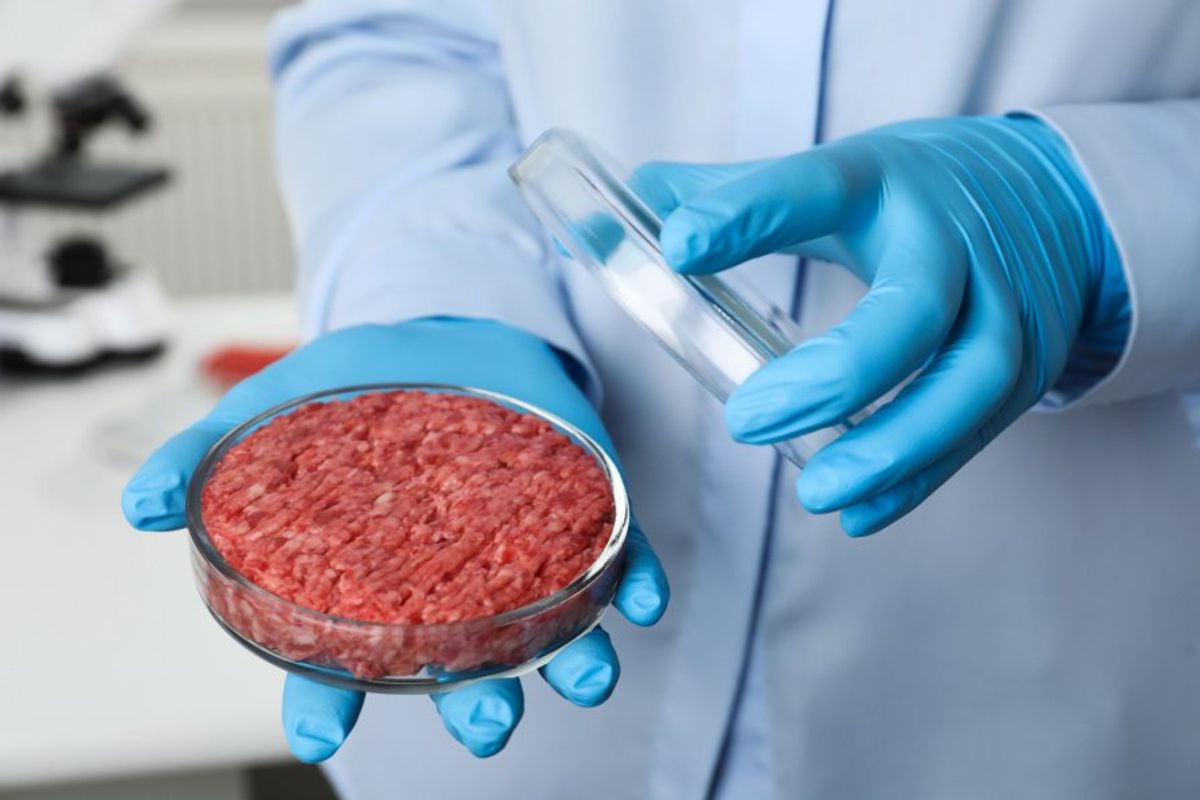How to Invest in Lab-grown Meat
Sustainability is becoming increasingly important even as the world's population continues to grow. The lab-grown meat industry is working to help answer the world's food needs.

Technology startups and scientists are making significant investments in lab-grown meat as interest in the industry increases. The move is backed by growing concern over the environmental impact of livestock, a segment that accounts for about 15 percent of the global greenhouse gas emissions generated by humans.
As world's population grows and more food is required, lab-grown meat, also called cultivated or cultured meat, might become a regular part of our diets, making its way onto the dinner table and appearing at some of our favorite restaurants. In fact, July has already featured the first-ever sale of cultivated chicken in the US, a major milestone for the market.
Still, the prospect of this meat 2.0 can raise many questions for those unfamiliar with the space. So what is lab-grown meat, and how can you invest in this budding industry?
What is lab-grown meat?
Not to be confused with plant-based meat alternatives, lab-grown meat is real meat. However, unlike traditional meat, which is produced by breeding and slaughtering animals, this meat is cultivated in a lab using cells originally derived from live animals.
A simplified explanation of the process is as follows. First, a technician obtains a sample of cells from a live animal, or a fertilized egg in the case of a chicken. These cells are then put in a bioreactor containing a culture media with all the nutrients required for growth, and the cells grow and multiply within it to produce muscle tissue. Finally, the meat is harvested and processed into various meat products, including patties, sausages, steak, nuggets or even sashimi.
The resultant form of the meat is influenced both by the type of culture media used, as well as by the use of an edible material referred to as scaffolding that helps shape the product's structure into the desired form.
Lab-grown meat has quite a few benefits compared to traditional meat. As discussed, cultured meat uses fewer of the planet's resources, produces significantly less greenhouse gases and requires no animals to be slaughtered to create it.
Another benefit is that it is possible to modify fat, protein and other nutrients when producing lab-grown meat. In contrast, traditional meat's nutritional profile is determined by the breed of the animal, its diet and factors like the climate.
How big is the lab-grown meat market?
The cultured meat market is growing rapidly, and it's expected to continue expanding. In 2022, it was valued at around US$246.9 million, and experts at Grand View Research predict it will grow at a compound annual growth rate of 51.6 percent from 2023 to 2030.
These impressive numbers reflect the increasing demand for sustainable food systems and advancements in alternative proteins. Lab-grown meat should be a staple at your supermarket, and the development of the technology has already come a long way — the first lab-grown meat burger debuted in 2013 and cost a staggering US$330,000 to produce. Today, however, companies have reduced production costs by 99 percent from their prototypes.
Additionally, a big hurdle for the industry in the US was cleared in June. Two companies in the country, Upside Foods and GOOD Meat, received clearance from the US Department of Agriculture to commence production of their cell-based proteins, specifically their cultivated chicken products. The companies previously received clearance from the US Food and Drug Administration, the other agency that is overseeing this developing sector.
Both companies are introducing their products through partnerships with specific restaurants before bringing their offerings to the wider market. Upside is partnered with Chef Dominique Crenn, who served the company's cultivated chicken for the first time on July 1 at Bar Crenn, marking the first ever US sale of cultivated meat. Just a few days later, Chef José Andrés launched GOOD Meat's cultivated chicken at his restaurant China Chilcano.
GOOD Meat's products are already available in Singapore, where the company achieved the first-ever approval for lab-grown meat back in 2020.
Who is investing in lab-grown meat?
Many companies working in the lab-grown meat industry are still private, so they don't trade on the stock market. However, they are open to private investments, which presents a unique opportunity for private equity investors to provide initial funding.
Currently, there are fewer than 100 startups in the cultivated meat industry. In terms of investments in these startups, a total of US$2.8 billion had been put into these companies as of the end of 2022, including US$896 million in 2022 alone.
Investments in the sector come from a diverse range of sources.
Major players in the animal protein sector, such as Tyson (NYSE:TSN) and Nutreco, as well as renowned investors like Temasek and SoftBank Group (TSE:9984), have shown interest in supporting this emerging field by providing financial backing.
Sovereign wealth funds, venture capital firms and private investors have also made significant contributions, alongside major players in the conventional meat industry. For example, the Abu Dhabi Growth Fund and Temasek Holdings led a funding round for Upside, with support from Bill Gates, SoftBank, Cargill and Tyson Foods.
Government support is also evident, with countries like Israel and the Netherlands providing grants and funding to cultivated meat companies and research institutions.
Famous chefs, celebrities and activists are also backing the industry. As mentioned above, chefs José Andrés and Dominique Crenn have begun serving cultivated meat at their restaurants, and individuals like Ashton Kutcher, Mark Cuban and Leonardo DiCaprio have made investments and partnerships in the sector.
How can you invest in the lab-grown meat industry?
Fortunately for retail investors, there are some public companies through which to get exposure to the lab-grown meat sector. Some of these companies are:
- Steakholder Foods (NASDAQ:STKH) — Israeli startup Steakholder Foods, which changed its name from Meatech 3D last year, uses its proprietary 3D bioprinters to create meat from cultivated animal cells. The company went public in May 2021 and trades on the NASDAQ.
- CULT Food Science (CSE:CULT,OTCQB:CULTF) — CULT Food Science invests globally in innovative cellular agriculture companies, forming partnerships for ingredient supply and product development in food sectors such as meat and dairy, among others.
- Agronomics (LSE:ANIC,OTC Pink:AGNMF) — Agronomics is an investment company focused on private companies in the cellular agriculture and cultivated meat sectors. This means that investing in Agronomics offers exposure to its portfolio, which includes cultured meat companies such as SuperMeat, Meatable, BlueNalu, Mosa Meat and CellX.
Investor takeaway
Lab-grown meat has the exciting potential to replicate the taste and texture of traditional meat, and the technology also opens up possibilities for developing new and unique meat products. While the industry is still in its early stages, the projected market potential is substantial.
Investors interested in participating in the lab-grown meat sector can explore avenues such as investing in startups, companies involved in the supply chain or specialized investment funds focused on alternative proteins. Staying informed about regulatory developments, scientific advancements and market trends will be crucial for identifying promising investment opportunities.
Don’t forget to follow @INN_LifeScience for real-time updates!
- Plant-based Food Stocks: 10 Biggest Companies in 2023 ›
- How to Invest in Plant-based Foods (Updated 2023) ›
- How to Invest in Life Science ›



